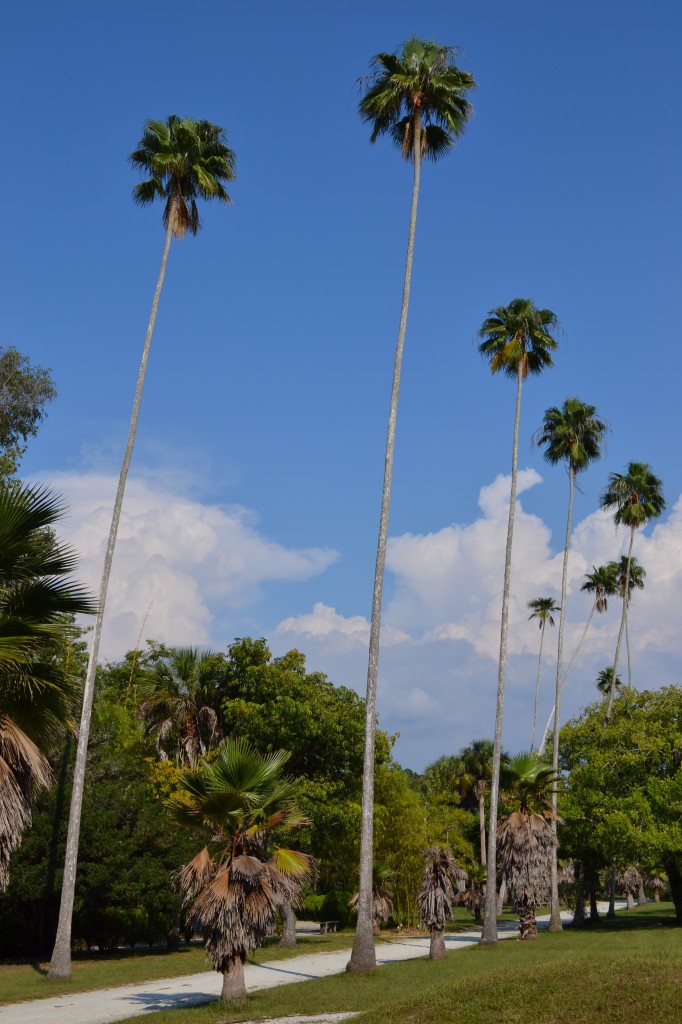Washingtonia Palm
Washingtonia robusta
Plant Family: Palmae
Leaves: Palmate, bright green, the leaf segments droop at the tip and the leaf petioles have sharp teeth. The top of the trunk is usually obscured by a dense covering of dead, hanging leaves.
Bark: Gray, blocky and fissured, the solitary trunk bulges a bit at the base.
Flowers: Small, white, in clusters up to 3 m long, seen in the spring.
Fruits: Rounded, brown to black, to 1cm; summer to fall.
Habitat: Common as an ornamental, this non-native from Mexico may naturalize along roadways and other disturbed sites and is considered moderately invasive.
Growth Form: Medium-sized to large tree.
Similar Species: California Washingtonia (Washingtonia filifera) is also planted in south Florida – the trunk is thicker and the leaves are a darker green. The two species hybridize freely so exact identification may be difficult.
Comments: This palm is cold hardy and is also planted in north Florida. The dead leaves may harbor undesirable rodents and some municipalities have passed laws requiring pruning.

